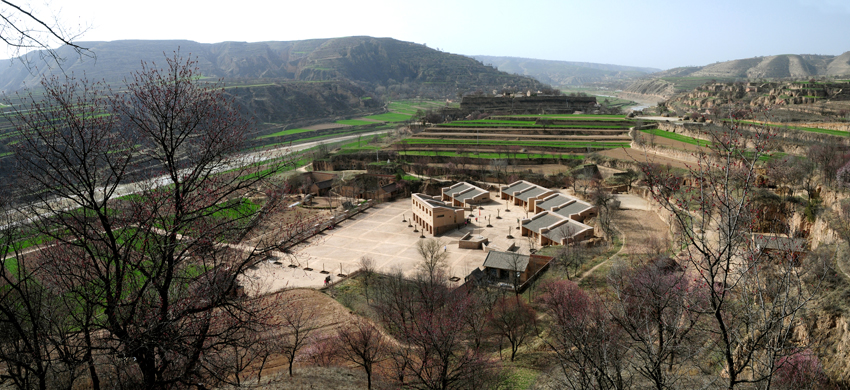HomeNews
|
About This Project
Name of Project |
Maosi Ecological Demonstration Primary School |
|
|
Location |
Maosi village, Xiansheng, Qingyang City, Gansu Province, China |
|
|
Function |
Primary School |
|
|
Design Date |
April,2003 – Mar, 2006 |
Completion Date |
31Aug, 2008 |
Gross Floor Area |
1,006m2 |
Site Area |
0.76 hectares |
Design Team |
NG, Yan-yung Edward |
|
Mu Jun |
|
|
Client / Developer |
Education Bureau of Xifeng, Qingyang City |
|
|
Project Manager |
NG, Yan-yung Edward |
|
|
M & E Consultant |
Building Design Institute of Qingyang City |
|
|
Structural Engineer |
Building Design Institute of Qingyang City |
|
|
Quantity Surveyor |
Xifeng Audit Centre of Financial Budgeteering |
Other Consultants |
Zhou Ruoqi |
|
Ma Jianxun |
|
Feng Guangmin |
|
|
Main Contractor |
Qingyang Si Litian Construction Limited |
|
Mao Jiaxiong |
|
|
EXECUTIVE SUMMARY
BACKGROUND
The poor conditions of China’s Loess Plateau region (north-west China) requires attention. The fragile ecological conditions and extreme climatic conditions pose severe environmental and sustainable challenges. The poor economy has restricted possible solutions. A lot of inappropriate concrete schools have been built in the area with donated money. However, they are not properly designed. We aspire to build a “demonstration” school that can showcase appropriateness, and can address the environmental, social and economical dimensions of sustainability.
THE SITE
The project is located in the village of Maosi, in Gansu province, 6 hours drive from Xian. The tranquil and natural village has around 2500 villagers and 200 students. Their existing schools are either in caves or in simple brick huts.
METHODOLOGY and DESIGN
“High science and low technology is a motto of our working.” Site survey and social surveys were done. We firstly listened and learnt from them. Site measurements, parametric option studies, environmental energy and daylight simulations and cost performance evaluations are conducted. We optimize what the villages had taught us. Talking to villagers and local craftsmen, we design the school traditionally and appropriately.
Follow the topography, 10 proposed classrooms are planned into 5 units at two levels to optimiise daylight, solar access and natural ventilation. Heavy thermal mass, roof insulation and double glazing are employed. Instead of buying cheaper factory made red tiles, we asked the village head to go to homes of villagers to collect un-used roof tiles to be recycled. The school was built by the villagers themselves with simple traditional tools. Most building materials are sourced in or around the site with minimum embodied energy. No waste was generated during construction, Off-cut were recycled, for example off-cut rafter are reused for children’s facilities, and spare mud bricks are mixed with straw mud for plaster. The construction has almost no environmental impact.
MEASUREMENT and EVAULATION
The new school was completed in summer 2007. The direct construction cost is cheaper than local schools of bricks and concrete. The new school has been used by children and teachers since September, 2007. According to field measurements, the indoor air temperature of new classrooms is cool in the summer and warm in the winter; there is no need to burn coal for heating.
DELIVERABLES
The followings are achieved: Firstly, we have respected them culturally and the school continues their lineage. Secondly, we have empowered the villagers socially allowing them to learn new skills and relearn their traditional skills. Thirdly, we have demonstrated an economically viable way of building schools in the area. Lastly, we have created them a zero carbon, low environmental impact and comfortable learning environment.
POSTSCRIPT
Last but not least, quoting the school master, “From now on, not one piece of coal needs to be burned to keep warm. All our money can be spent on books.”
5 top

